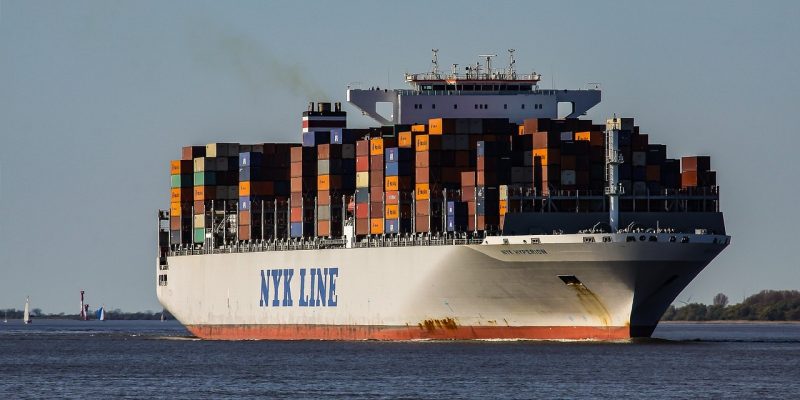If you’re trying to reduce your business’s freight carbon footprint, choosing a shipping method that is environmentally friendly is a crucial decision to make. When it’s time to choose the fright modes, you can make your decision based on which one is better for the environment. The most significant debate is whether you ship by air or by the sea – each one carries its own merits and downsides. This guide will help you understand the environmental impact of different shipping methods and how to choose the optimal freight method for your business.
According to the International Transport Forum, freight transport accounts for a total of 7% of all global emissions. US environmental law mandates that polluters take responsibility for the damage they’ve and pay for the loss under the “polluter pays” principle. While globalization has opened up new routes and lowered the cost of shipping goods internationally, the choice of transportation mode can have a severe impact on the environment.
This guide is part of our series on Shipping, for a full overview of shipping check out our ultimate guide on Shipping: Freight Shipping Cost, Steps, and More // Ultimate Guide
Air and Sea Freight Carbon Footprint
So, what about ocean vs. air shipping carbon footprint – which one is better for the environment?
- Airfreight leaves the largest freight carbon footprint. Airplanes emit 500 grams of CO2 per metric ton of freight per km of transportation, while transport ships emit only 10 to 40 grams of CO2 per kilometer.
- Airplanes pollute at an average rate of 20-30x more than ships, while ships are the most environmentally-friendly transport vessels. For comparison, modern trucks/lorries emit 60-150 grams of CO2, and trains emit 30-100 grams of CO2 per kilometer.
The Total Environmental Impact of Sea and Air Freight Shipping
It is worth noting that CO2 isn’t the only pollutant emptied in our atmosphere. If you are looking solely at CO2 emission, then air shipping creates more CO2 emissions per kg/mile than ocean shipping. Jet fuel, however, is the highest grade of fuel and burns much cleaner with few by-products (CO2 notwithstanding).
However, for overall emissions, ocean shipping is worse as most ships use some of the lowest grades of fuel, called bunker fuel, which has exceptionally high sulfur content. Further, most container ships have little to no means to block or filter emissions. The amount of different pollutants makes shipping one of the primary sources of sulfur dioxide, nitrogen oxide, and particulate pollution. Ocean shipping alone creates 18% of all emissions globally.
Ocean Freight Vs. Air Freight: Ocean Freight Benefits
Ocean freight is the most common shipping choice for international transport and the most in-demand among buyers. Aside from the environmental factor, there are many benefits to choosing ocean freight over air freight. Airfreight is only 1% of international trade in terms of weight, while the value transported by air comprises more than 1/3 of the total value of all cargo. The reason air freight isn’t as common is that air freight is mostly to transport valuable items.
The way ocean freight and air freight charge for shipping are different as well. While you may have few variables based on the shipping company, ocean freight tends to have a lower sticker price than air freight. Airfreight uses chargeable weight to determine the cost of the shipment, while ocean freight charges by the total cargo volume on small shipments and charges by container size (20′-40′) for all large shipments. The following is a list of reasons to choose ocean freight:
Larger volume
If your company ships a lot of cargo and the cargo can’t be easily handled, stored, and transported, you’re getting much better off relying on ocean freight for a large volume.
Heavy cargo
The chargeable weight can be outrageous on air freight because the weight impacts the total price you have to pay. Ocean freight can save you money on heavy cargo. As a result the per weight cost of shipping is much less than when shipping by air.
Non-urgency
Unless your shipment is urgent, you have no reason to pay higher costs for air freight. For all products that are not time-sensitive, you’re better off relying on ocean freight.
Note: If the cargo is small and light, you will be hard-pressed to find a price difference between ocean and air freight. The bottom line is that ocean freight is economically more viable for businesses that transport large-volume cargo or aren’t in a rush to get their cargo. If you only have to ship once and your shipment is lightweight, you could pay equally to ship via air freight as you would via ocean freight.
Ocean Freight Vs. Air Freight // Air Freight Benefits
While air freight is a big polluter and generally deemed more expensive than ocean freight (except for lightweight cargo), there are few benefits that you can get by choosing air freight over ocean freight:
Faster shipping
Airfreight is the fastest international shipping method. No matter the distance between the origin country and the destination, air freight transport takes less than 36 hours – even from the furthest points of the earth. The fast speed makes it ideal for all businesses that need their goods shipped fast. Ocean freight may take up to 1 month to move the products from the departure to the destination port, and you may have to wait up to 3 days for unloading.
Valuable shipments
Airfreight is used for all valuable shipments that you can’t risk getting damaged along the way. If the cargo is shipped by sea for 30 days, you never know if the ship may pass through a storm and cause damage to the cargo. Airfreight is the better choice for all valuable shipments, including electronics, jewelry, fashion, and other valuables.
Perishable items
Certain items can perish if the cargo does not arrive on time. Perishable items include freight such as food, flowers, etc. If the goods do not move within days, you may lose business. Likewise, individual companies rely on constant re-perishing of goods, which means you have to guarantee daily transport for your clients. High-ticket products and niche products where the customer expects a very prompt shipment have to be shipped by air.
Reliability
If your business relies on constant international trade, one unfortunate delay on a shipping route could have a significant impact on your bottom-line revenue. While a single issue on the ocean or docking port could cause delays that last weeks at a time, you can generally rely on air freight as a means to transport your goods on time. Airfreight is the most reliable shipping method of all, with a close to 0% failure rate.
Easy shipping
Airfreight is easy to ship because airports around the world have streamlined their paperwork and make it easy for shipping companies to get their goods through customs and onto an international airport of choice.
Final Thoughts // Is Sea or Air Freight better for the Environment?
Ocean Freight is better for the environment from a Carbon emission point of view, but in terms of total emission, both are about roughly equal. It’s hard to give an edge to air or sea shipping as they emit different types of pollutants at different volumes and in different ways. Determining the freight carbon footprint is east as shipping is much less intensive, but the total emissions and environmental impact is much harder to define.
If your business is on the fence about choosing between ocean freight and air freight, there are benefits and downsides to both. Airfreight is generally the more significant pollutant, but it can cut down on the travel time by a considerable margin.
Regarding cost, both airfreight and ocean freight can be affordable as long as you ship low-volume cargo. If you ship higher volume cargo, ocean freight is the optimal choice. However, if you need your shipment within days and you ship lightweight cargo – you’re better off relying on air freight for your transport.





1 thought on “Air Freight vs. Sea Freight Carbon Footprint // Environmental Impact of Shipping”
I’m inspired by your articles. You have shared very valuable information and knowledge about shipping that people should recognize. Thank you for sharing. I would love to see more updates from you.